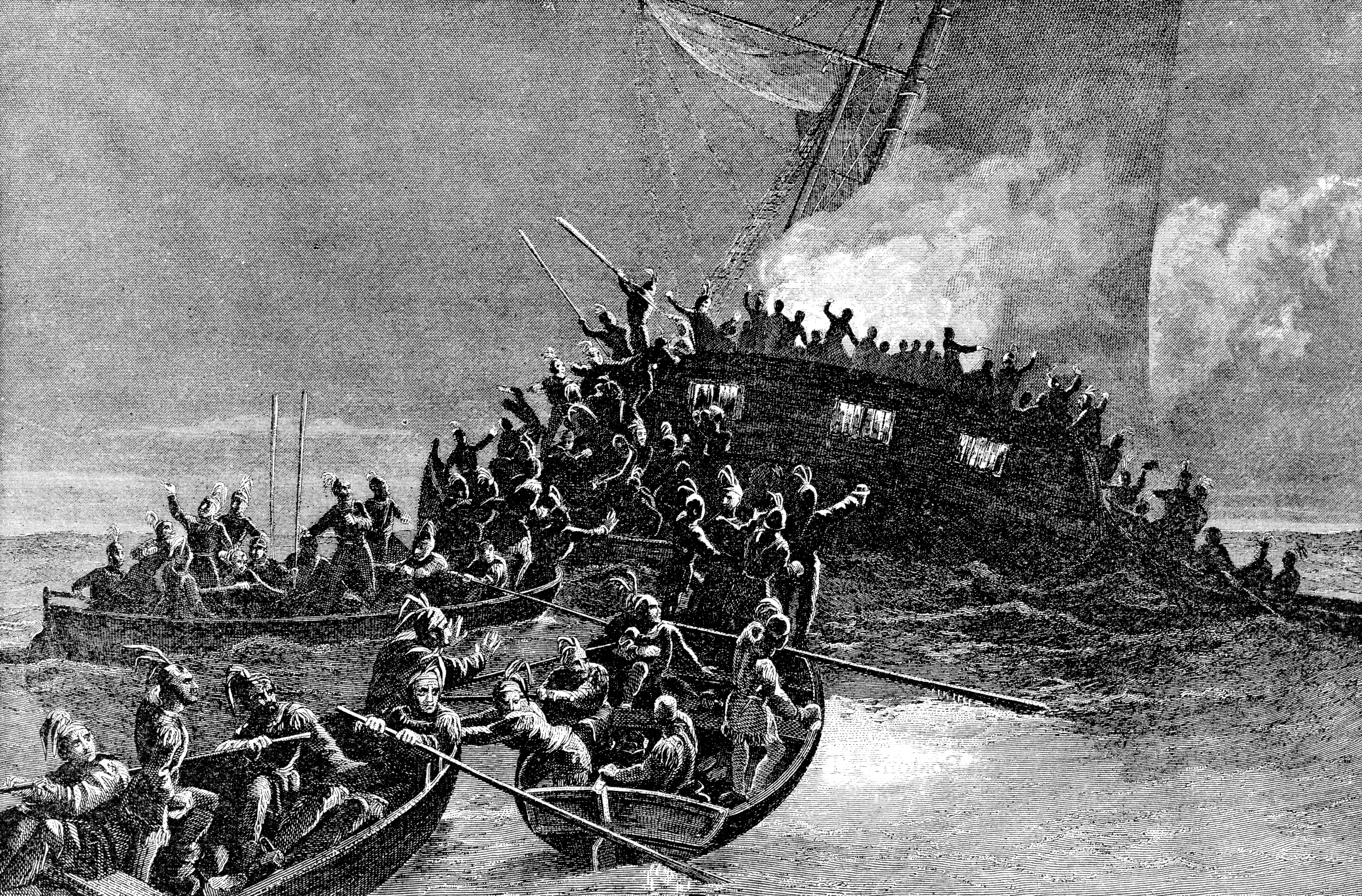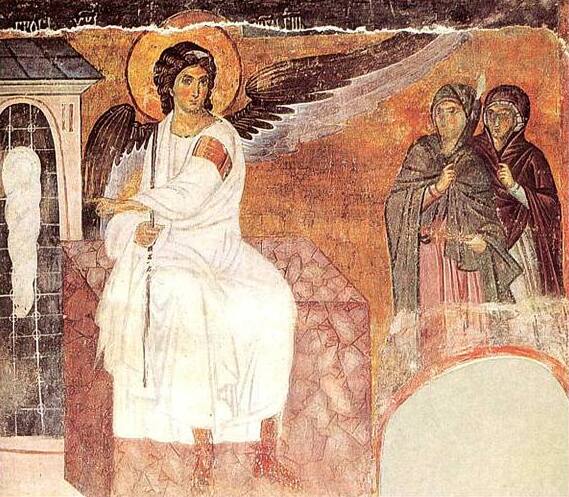|
Pavel Đurković
Pavle or Pavel Đurković (1772 – 1830) was a Serbian painter, portraitist and iconographer who distinguished himself in the iconography of monasteries and portraits of great personalities (mostly Serbs). His greatest work was the iconostasis of the church in Vršac and Bela Crkva from around 1792. Đurković "icon painter from Buda", because from 1793. he painted icons on the iconostasis of the White Church of Saint Peter and Paul. Biography Đurković was born in Baja, Kingdom of Hungary. He traveled to large cities and towns and portrayed wealthier citizens. Thus, in 1811, he made a portrait of Archimandrite Pavle Hadžić. In 1812, he worked in Zemun for the Karamata family, and in 1816 he portrayed Vuk Karadžić and Lukijan Musicki in Šišatovac. In 1820, he painted Metropolitan Stratimirović in Sremski Karlovci. After 1820, he traveled to Wallachia and Russia, painting along the way, and settled in Odessa, where his work went very well, where he progressed as a ... [...More Info...] [...Related Items...] OR: [Wikipedia] [Google] [Baidu] |
Vršac
Vršac ( sr-Cyrl, Вршац, ) is a city in the autonomous province of Vojvodina, Serbia. As of 2022, the city urban area had a population of 31,946, while the city administrative area had 45,462 inhabitants. It is located in the geographical region of Banat. Etymology The name ''Vršac'' is of Serbian origin, ultimately deriving from Proto-Slavic *vьrxъ, meaning "summit". In Serbian, the city is known as Вршац or ''Vršac'', in Romanian as ''Vârșeț'' or Vîrșeț, in Hungarian as ''Versec'' or ''Versecz'', in German as ''Werschetz'', and in Turkish as ''Virşac'' or ''Verşe''. History The uniqueness of Vršac is reflected in the fact that it has been inhabited since the dawn of the first cultures. Thus, the oldest traces of human presence in Banat originate precisely from Vršac, since individual finds of Paleolithic flint tools from the middle and younger Paleolithic, Mousterian and Aurignacian cultures were found on the slopes of the Vršac Mountains. Th ... [...More Info...] [...Related Items...] OR: [Wikipedia] [Google] [Baidu] |
Second Serbian Uprising
The Second Serbian Uprising ( / ''Drugi srpski ustanak'', ) was the second phase of the Serbian Revolution against the Ottoman Empire, which erupted shortly after the re-annexation of the country to the Ottoman Empire in 1813. The occupation was enforced following the defeat of the First Serbian Uprising (1804–1813), during which Serbia existed as a '' de facto'' independent state for over a decade. The second revolution ultimately resulted in Serbian semi-independence from the Ottoman Empire. The Principality of Serbia was established, governed by its own parliament, constitution and royal dynasty. ''De jure'' independence, however, was attained in 1878, following the decisions of the Congress of Berlin. Background The First Serbian Uprising liberated the country for a significant time (1804–1813) from the Ottoman Empire; for the first time in three centuries, Serbs governed themselves without the supremacy of the Ottoman Empire or Habsburg Austria. After the failure of th ... [...More Info...] [...Related Items...] OR: [Wikipedia] [Google] [Baidu] |
Serbian Male Painters
Serbian may refer to: * Pertaining to Serbia in Southeast Europe; in particular **Serbs, a South Slavic ethnic group native to the Balkans ** Serbian language ** Serbian culture **Demographics of Serbia, includes other ethnic groups within the country *Pertaining to other places **Serbia (other) **Sorbia (other) *Gabe Serbian (1977–2022), American musician See also * * * Sorbs * Old Serbian (other) Old Serbian may refer to: * someone or something related to the Old Serbia, a historical region * Old Serbian language, a general term for the pre-modern variants of Serbian language, including: ** the Serbian recension of Old Church Slavonic la ... {{Disambiguation Language and nationality disambiguation pages ... [...More Info...] [...Related Items...] OR: [Wikipedia] [Google] [Baidu] |
19th-century Serbian Painters
The 19th century began on 1 January 1801 (represented by the Roman numerals MDCCCI), and ended on 31 December 1900 (MCM). It was the 9th century of the 2nd millennium. It was characterized by vast social upheaval. Slavery was abolished in much of Europe and the Americas. The First Industrial Revolution, though it began in the late 18th century, expanded beyond its British homeland for the first time during the 19th century, particularly remaking the economies and societies of the Low Countries, France, the Rhineland, Northern Italy, and the Northeastern United States. A few decades later, the Second Industrial Revolution led to ever more massive urbanization and much higher levels of productivity, profit, and prosperity, a pattern that continued into the 20th century. The Catholic Church, in response to the growing influence and power of modernism, secularism and materialism, formed the First Vatican Council in the late 19th century to deal with such problems and confirm cer ... [...More Info...] [...Related Items...] OR: [Wikipedia] [Google] [Baidu] |
18th-century Male Artists
The 18th century lasted from 1 January 1701 (represented by the Roman numerals MDCCI) to 31 December 1800 (MDCCC). During the 18th century, elements of Enlightenment thinking culminated in the Atlantic Revolutions. Revolutions began to challenge the legitimacy of monarchical and aristocratic power structures. The Industrial Revolution began mid-century, leading to radical changes in human society and the environment. The European colonization of the Americas and other parts of the world intensified and associated mass migrations of people grew in size as part of the Age of Sail. During the century, slave trading expanded across the shores of the Atlantic Ocean, while declining in Russia and China. Western historians have occasionally defined the 18th century otherwise for the purposes of their work. For example, the "short" 18th century may be defined as 1715–1789, denoting the period of time between the death of Louis XIV of France and the start of the French Revolution ... [...More Info...] [...Related Items...] OR: [Wikipedia] [Google] [Baidu] |
1830 Deaths
It is known in European history as a rather tumultuous year with the Revolutions of 1830 in France, Belgium, Poland, Switzerland and Italy. Events January–March * January 11 – LaGrange College (later the University of North Alabama) begins operation, becoming the first publicly chartered college in Alabama. * January 12 – Webster–Hayne debate: In the United States Congress, Robert Y. Hayne of South Carolina debates against Daniel Webster of Massachusetts about the question of states' rights vs. federal authority. The debate lasts until –January 27. * February 3 – The London Protocol (1830), London Protocol establishes the full independence and sovereignty of Greece from the Ottoman Empire, as the result of the Greek War of Independence. * February 5 – A fire destroys the Argyll Rooms in London, where the Philharmonic Society of London presents concerts, but firefighters are able to prevent its further spread by use of their new equipment, steam-powered fire e ... [...More Info...] [...Related Items...] OR: [Wikipedia] [Google] [Baidu] |
1772 Births
Events January–March * January 10 – Shah Alam II, the Mughal Emperor of India, makes a triumphant return to Delhi 15 years after having been forced to flee. * January 17 – Johann Friedrich Struensee and Queen Caroline Matilda are arrested, leading to his execution and her banishment from Denmark. * February 12 ** Breton-French explorer Yves-Joseph de Kerguelen-Trémarec discovers the uninhabited Kerguelen Islands in the Southern Indian Ocean. ** The Virginia Assembly amends an act to describe the punishments for the practice of gouging. * February 17 – The First Partition of Poland is agreed to by Russia and Prussia, later including Austria. * March 8 – Biela's Comet is first discovered by French astronomer Jacques Leibax Montaigne, but not proven to be a periodic comet until 1826, when Wilhelm von Biela correctly identifies its return. * March 20 – Pedro Fages, the Spanish Governor of Alta California, and Juan Crespí, a Cath ... [...More Info...] [...Related Items...] OR: [Wikipedia] [Google] [Baidu] |
Paja Jovanović
Pavle "Paja" Jovanović ( sr-cyr, Павле "Паја" Јовановић; ; 16 June 1859 – 30 November 1957) was a Serbian realist painter who painted more than 1,100 works including: '' The Wounded Montenegrin'' (1882), '' Decorating of the Bride'' (1886), '' The Takovo Uprising'' (1894), '' Migration of the Serbs'' (1896) and ''The Proclamation of Dušan's Law Codex'' (1900). As one of the best European painters of oriental scenes, Paja at the end of the 19th century turned to painting historical events of Serbian history. Paja was also the premier portraitist of Europe after 1905. He painted the Emperor Franz Joseph I of Austria 15 times. He painted royalty, major industrialists, scientists, bankers, oil barons and monopolists, including certain heirs to the Standard Oil fortune in the United States. He was a very sought-after portraitist world-wide, which made him incredibly wealthy in his lifetime. Many European and international museums carry his works, signed under va ... [...More Info...] [...Related Items...] OR: [Wikipedia] [Google] [Baidu] |
Serbian Art
Serbian art refers to the visual arts of the Serbs and their nation-state Serbia. The medieval heritage includes Byzantine art, preserved in architecture, frescos and icons of the many Serbian Orthodox monasteries. In the early modern period, Serbian visual arts began to be influenced by Western art, culminating in the Habsburg monarchy in the late 18th century. The beginning of modern Serbian art is placed in the 19th century. Many Serbian monuments and works of art have been lost forever due to various wars and peacetime marginalizations. Prehistory Currently, Europe's oldest known civilization was discovered in Serbia, namely Lepenski Vir and Vinča culture. In Serbia, Archaeological Sites of Exceptional Importance (Serbia) are numerous and have the highest level of state protection under the Law on Cultural Heritage. See: Prehistoric sites in Serbia and Prehistory of Southeastern Europe for artifacts and sculpture found at the archeological sites of Lepenski Vir. Roman pe ... [...More Info...] [...Related Items...] OR: [Wikipedia] [Google] [Baidu] |
List Of Painters From Serbia
This is a list of notable Serbian painters. A * Nikola Aleksić (1808–1873) * Dimitrije Avramović (1815–1855) * Ljubomir Aleksandrović (1828–1890) * Stevan Aleksić (1876–1923) * Dragomir Arambašić (1881–1945) * Stojan Aralica (1883–1980) * Đorđe Andrejević Kun (1904–1964) * Mika Antić (1932–1986) * Dragoslav Pavle Aksentijević (born 1942) * Marina Abramović (born 1946) * Nataša Atanasković (born 1972) * Emanuil Antonovich (1785–1829) B * Nikola Božidarević (1460–1517) * Dimitrije Bačević (1735–1770) * Georgije Bakalović (1786–1843) * Anastas Bocarić (1864–1944) * Špiro Bocarić (1876–1941) * Jovan Bijelić (c.1884–1964) * Ilija Bašičević (1895–1972) * Oto Bihalji-Merin (1904–1993) * Dimitrije Bratoglic (1765–1831) * Janko Brašić (1906–1994) * Miloš Bajić (1915–1995) * Radivoj Berbakov (1925–2003) * Kossa Bokchan (1925–2009) * Ivana Bašić (born 1986) * Bogdan Bulajić (born 1940) C ... [...More Info...] [...Related Items...] OR: [Wikipedia] [Google] [Baidu] |




